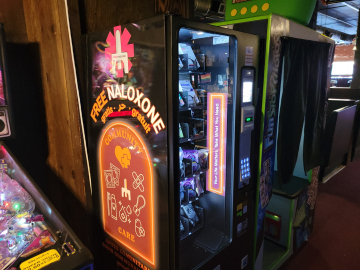A Blockchain Solution to the Opioid Crisis
In the urgent search for multipronged, coordinated solutions to the opioid epidemic ravaging the U.S., blockchain might be just the powerful weapon we need.
More than 115 people in the U.S. die every day after overdosing on opioids, according to the National Institute on Drug Abuse. The Institute sets the price tag for the economic burden for prescription opioid misuse in the U.S. at $78.5 billion a year. Communities all over the U.S., particularly rural areas and industrial cities, have suffered from the consequences. Imagine the scale: Drug manufacturers reportedly shipped 20 million painkillers to a town of 3,000 people, sending on average more than 6,000 pills for each resident.
Many factors contribute to this highly complex problem, but a few key issues stand out:
- Lack of Transparency: Like the overall healthcare system, the prescription drug market has many actors, each driven by different motives. This system severely lacks transparency and accountability. Suppliers, drug manufacturers, doctors, pharmacists and ill-informed patients all bear some responsibilities. What’s more, it is difficult to pinpoint the source of wrongdoings and root out bad actors.
- Meddlesome Middlemen: Adding to the web of intermediaries, Pharmacy Benefit Managers (PBMs) administer pharmacy benefits for most Americans with little regulatory oversight, creating friction between manufacturers and payers while pocketing huge profits thanks to widespread opacity.
- Lack of Data Integrity: Despite various data initiatives to shed light on the prescription system, there is no single source of truth when it comes to data collected about this antiquated process—leaving it vulnerable to fraud and abuse.
- Misaligned Incentives: Though we are moving towards value-based care, medical services and drugs are still mostly reimbursed on the volume-based model. Government incentives rewards doctors who overprescribe drugs. Meanwhile, pharmaceutical companies incentivize insurers with rebates to include their drugs on the formulary. However, there is little financial incentive to prescribe appropriate amounts and provide value care for patients.
All the above contribute to a broken system, fueling a lack of trust among all the players that discourages coordinated action to help stem this crisis.
This is where blockchain technology comes into play.
What is Blockchain?
Blockchain has captivated many with the rise of cryptocurrencies like Bitcoin. Blockchain is a distributed ledger database shared across all computer nodes on the internet. It provides a single source of truth that cannot be retroactively altered, and therefore ensures the integrity of the data stored on it. No alteration. No opacity. No middleman.
This shared ledger brings transparency and traceability of data, which can represent money, real estate, rights to artwork, coffee beans or anything of value. In these networks, blockchain designers use a mix of economics and cryptography to align incentives of the actors, penalizing bad actors and rewarding good behavior.
The benefits of decentralization, data security, and provenance have organizations across many fields—from Silicon Valley startups to IBM to the World Bank—experimenting with blockchain.
How to Tackle the Opioids Problem?
In ‘redesigning’ the lifecycle of prescription drugs, we propose tracking the prescriptions sent from providers to the pharmacy and the quantity being prescribed. Building a prescription drug platform on the blockchain allows each party to have a set of shared facts. This removes information discrepancies between plan sponsors and drug companies, while reducing the power and involvement of the PBMs in price negotiations—and holding them accountable for cost management for the patients.
Instead of paper prescriptions, e-prescriptions securely stored on the blockchain can restore trust to an outdated system with a layer of monitoring for misuse. That is because an algorithm built into the network ensures the consistency and integrity of data, which prevents attempts to tamper with prescriptions written by doctors.
Early Adopter Already Taking Action
Some blockchain startups have plunged into solving these thorny issues, including BlockMedx, which is building a blockchain-based prescription platform to bring transparency and accountability to the misuse of opioids. Its solutions include other emerging technologies such as machine learning to predict the likelihood of drug misuse and abuse. And a blockchain-based identity management solution gives patients control of their data.
Though blockchain technology is still in early stages, the opioids emergency is already here and will persist until we intervene. It’s imperative we deploy innovative, multipronged solutions to this coordination problem—and blockchain could prove to be key.
Yidu Wang is a healthcare product manager and blockchain researcher. Dang Du is a cryptocurrency journalist and blockchain strategist. The authors run A Bit Cryptic, a podcast that features blockchain pioneers including those in digital health. Check out their interviews at: Medium; iTunes; and Google Play.
Join the tens of thousands of subscribers in more than 100 countries who rely on Global Health NOW summaries and exclusive articles for the latest public health news. Sign up for our free weekday enewsletter, and please share the link with friends and colleagues: http://www.globalhealthnow.org/subscribe.html
Blockchain technology could bring much-needed transparency and data traceability to the opioid prescription system. Image: Getty Images




